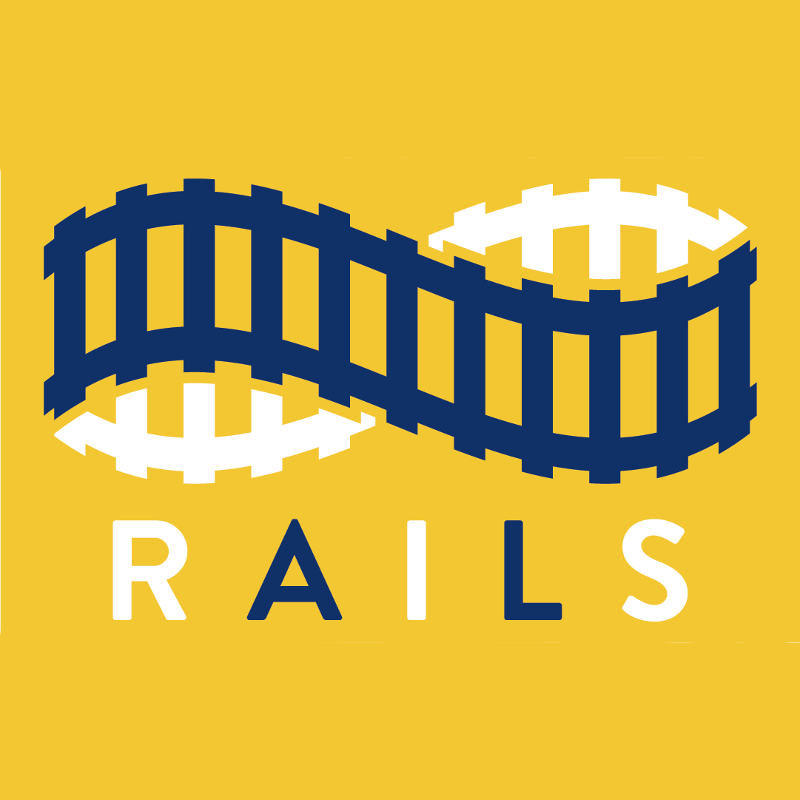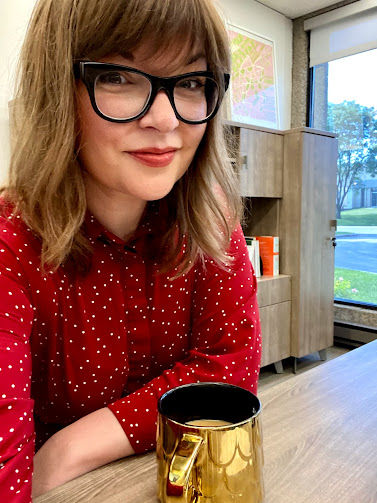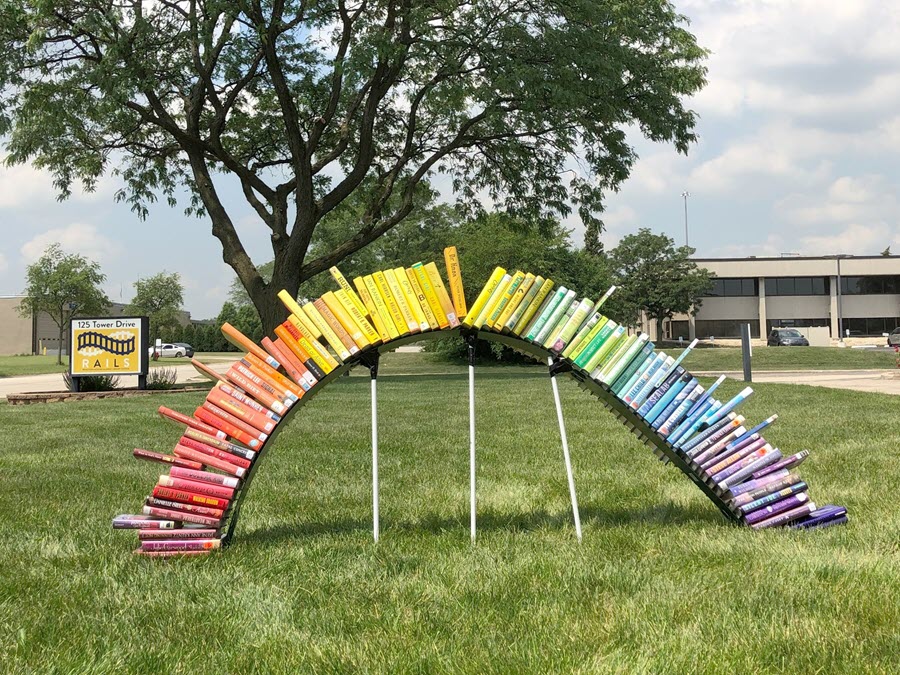Pandemic Challenges and Learning Outcomes from RAILS
 Monica Harris is the Associate Executive Director of RAILS (Reaching Across Illinois Library System), which serves approximately 1,300 academic, public, school, and special library agencies in northern and west-central Illinois. We caught up with Monica to ask her about her experience during the pandemic.
Monica Harris is the Associate Executive Director of RAILS (Reaching Across Illinois Library System), which serves approximately 1,300 academic, public, school, and special library agencies in northern and west-central Illinois. We caught up with Monica to ask her about her experience during the pandemic.
The following are excerpts from our interview, edited for length and clarity.
How has the pandemic affected the way you see the future of library systems?
The pandemic has really changed the way libraries are conducting their work. Everything from how they are addressing remote work, developing engaging virtual programming, changes in purchasing habits, and the pressing needs to address community inequality are all very pressing needs.
How has the pandemic changed the work that you do?
 Some aspects of our work changed immediately in March of 2020. Nearly all of the RAILS staff worked remotely for the first three months of the pandemic. We were very fortunate that we had an IT infrastructure that was already set up for remote work, so we were able to quickly adapt. As our libraries began to reopen, so did RAILS, with delivery services and many aspects of administration returning to in-person service in June 2020. Since then, RAILS has operated on a hybrid model, with staff working both in person and remotely, depending on the nature of their responsibilities and work.
Some aspects of our work changed immediately in March of 2020. Nearly all of the RAILS staff worked remotely for the first three months of the pandemic. We were very fortunate that we had an IT infrastructure that was already set up for remote work, so we were able to quickly adapt. As our libraries began to reopen, so did RAILS, with delivery services and many aspects of administration returning to in-person service in June 2020. Since then, RAILS has operated on a hybrid model, with staff working both in person and remotely, depending on the nature of their responsibilities and work.
During the last 18 months, RAILS has been very focused on helping our member libraries meet the needs that they have identified during the pandemic, and RAILS has been very nimble in providing tools, networking, and opportunities to connect member libraries to share information with colleagues and their communities.
What do you miss most about your “pre-pandemic” work life?
I miss going to libraries and seeing library workers! Pre-pandemic, I was able to attend in-person networking meetings and events and see library workers in their environments, showing off the amazing work that they do. We have attended a lot of virtual events, but I really look forward to the days when we can gather more regularly.
What do you see as being the biggest impact on libraries?
I’m very interested in how the opportunity for digital solutions has changed the game for libraries. We had huge growth in our e-book program, eRead Illinois in the last year, and a big part of that growth was in K–12 school participation in the e-book program. It remains to be seen whether that shift is temporary, or something more permanent.
Similarly, libraries have seen big shifts in how users are borrowing items, with holds and interlibrary loan deliveries nearly reaching pre-pandemic numbers in many areas in 2021. At the same time, in-person visits and in-person discovery is still lagging in some places, as communities alter their regular patterns in pandemic life.
Libraries have created some innovative solutions to keep their communities engaged and learning during the pandemic. The most recent Public Library Association 2020 Technology Survey noted that nearly half of public libraries provided streaming public programs in 2020. We are seeing that fresh focus on streaming programming in Illinois. Illinois libraries are also looking at new solutions for combining their efforts to create immersive, high-quality online experiences for libraries of all sizes, as in the new programming cooperative, Illinois Libraries Present. It’s been so inspiring to see how quickly libraries have responded to these challenges even under incredible odds.
What do you see as being the biggest impact on staff from the pandemic?
In the immediate moment, it is a stressful life season for staff, sometimes for reasons that are completely unrelated to their work. Challenges keep coming in 2021 and staff continue to respond to them, but after a certain point staff are tired. I think it is a challenge to continue to make staff feel appreciated and seen in the face of all these challenges, even as they are all working so hard. We continue to try to find ways to let them know how much we appreciate them and support them.

What have you learned from the pandemic that you’re applying to your work?
The importance of flexibility and pacing. When there is always so much to do and focus on, it can be difficult to plan or rest. Being able to pivot when necessary as well as the ability to walk away from an issue with enough time to get a fresh perspective is important.
What has been the biggest challenge during the pandemic?
In the early days of the pandemic, we really had to challenge our assumptions of how to effectively do our work and get things done. Information was coming at a breakneck speed, and we had to respond quickly to the issues of member libraries and give them quality information and thoughtful perspective. It was often very challenging to do both at once! The best thing in midst of this turned out to be just connecting the wonderful members who were doing the work so that they could help each other. Sharing newly developed procedures, innovative programming, and data about closures and services helped them to make the best possible decisions for their own library communities.
What resources do you wish had existed that would have been helpful during the pandemic?
It seems a lifetime ago, but at the beginning of the pandemic we had no idea how COVID-19 was transmitted. We spent so much time talking about safe materials handling and surface cleaning because we wanted to keep our communities safe. Knowing what we know now about transmission, we would have approached things differently, but we all did the best we could with the information we had at the time.
So much information had to be developed around best practices for remote work, safe working environments, HVAC, quality Equity, Diversity, and Inclusion (EDI) practices, and streaming programming for libraries. We are proud of the work we did in developing responses to these huge challenges and concerns, but it would be great if someone could have handed us best practices to those things back in March 2020!
What do you hope the next year will look like?
I’m hoping the last 18 months have taught our member libraries a lot about working together and moving forward in the face of uncertainty. I’m hopeful for more opportunities for safe in-person networking and learning, more opportunities to improve our EDI lens and practice, and a chance to connect more with my colleagues at RAILS. I hope that member libraries will be able to marry their innovative spirit with very real funding opportunities for their ideas and the services that their communities so desperately need. I hope for more focus on the amazing work that school library workers are doing in the face of the pandemic and I hope for more funding and support for their programs.
Photos courtesy: Monica Harris
Related stories
Libraries and Museums as Vaccination Sites
Libraries and museums are innovative community centers, and throughout the COVID-19 pandemic, they have been essential to the community and national response.
Want to learn more?
More resources are available through the REALM project website.
This project was made possible in part by the Institute of Museum and Library Services, project number: ODIS-246644-ODIS-20.

